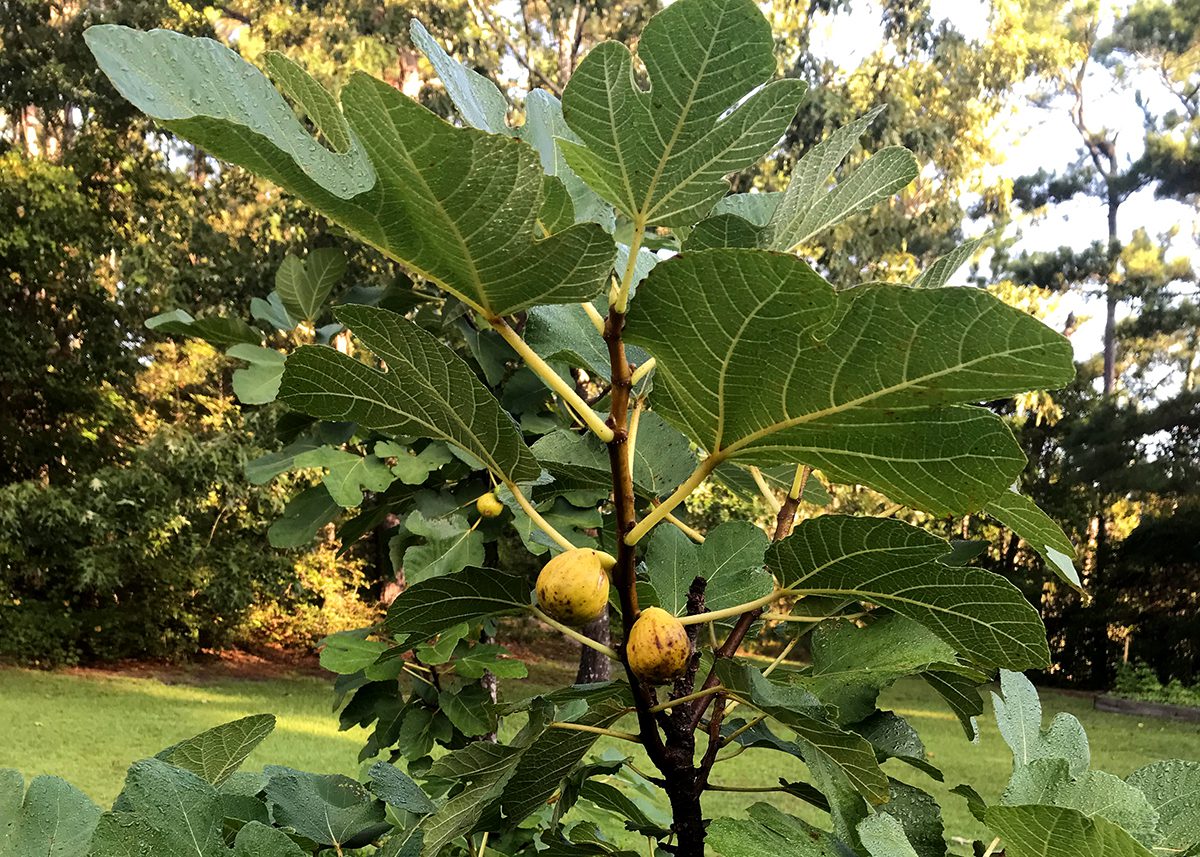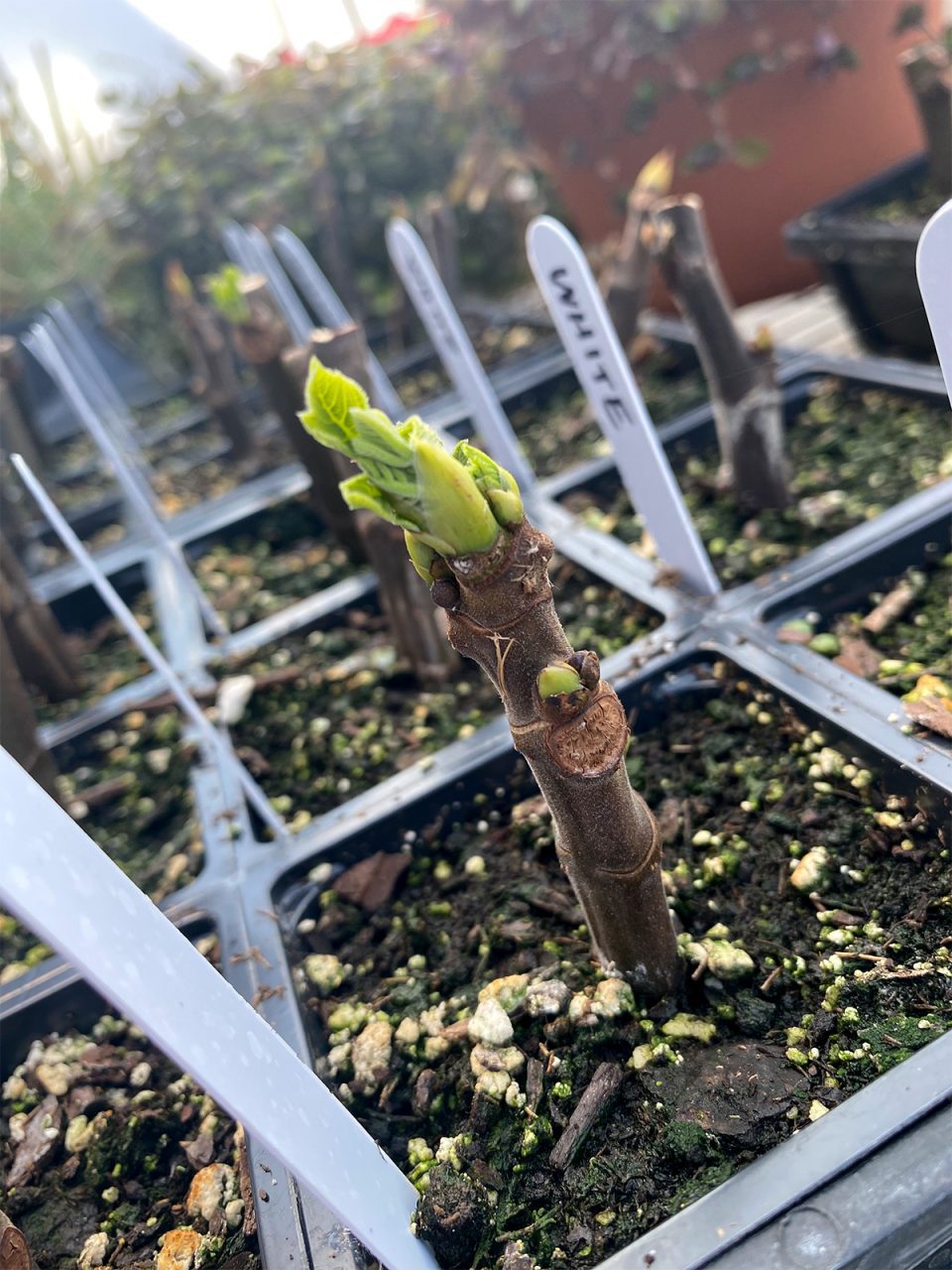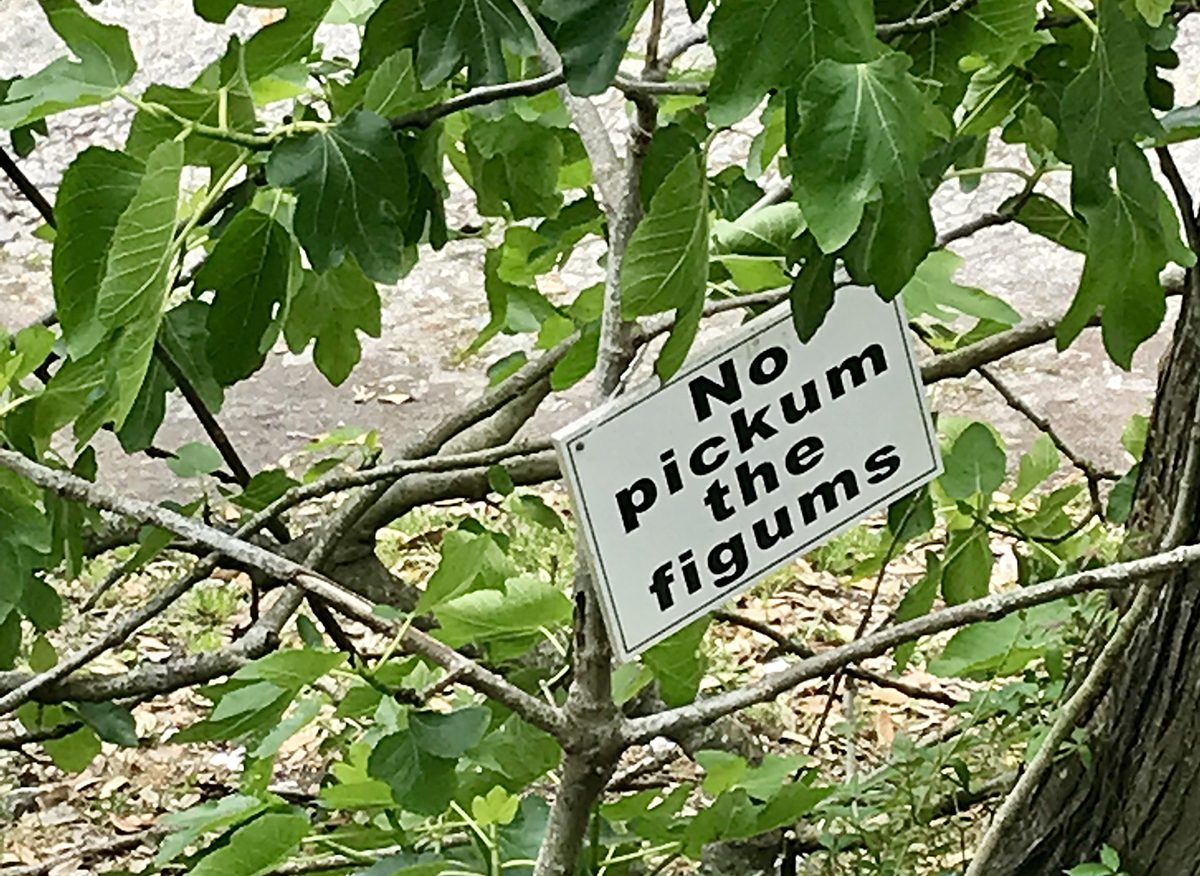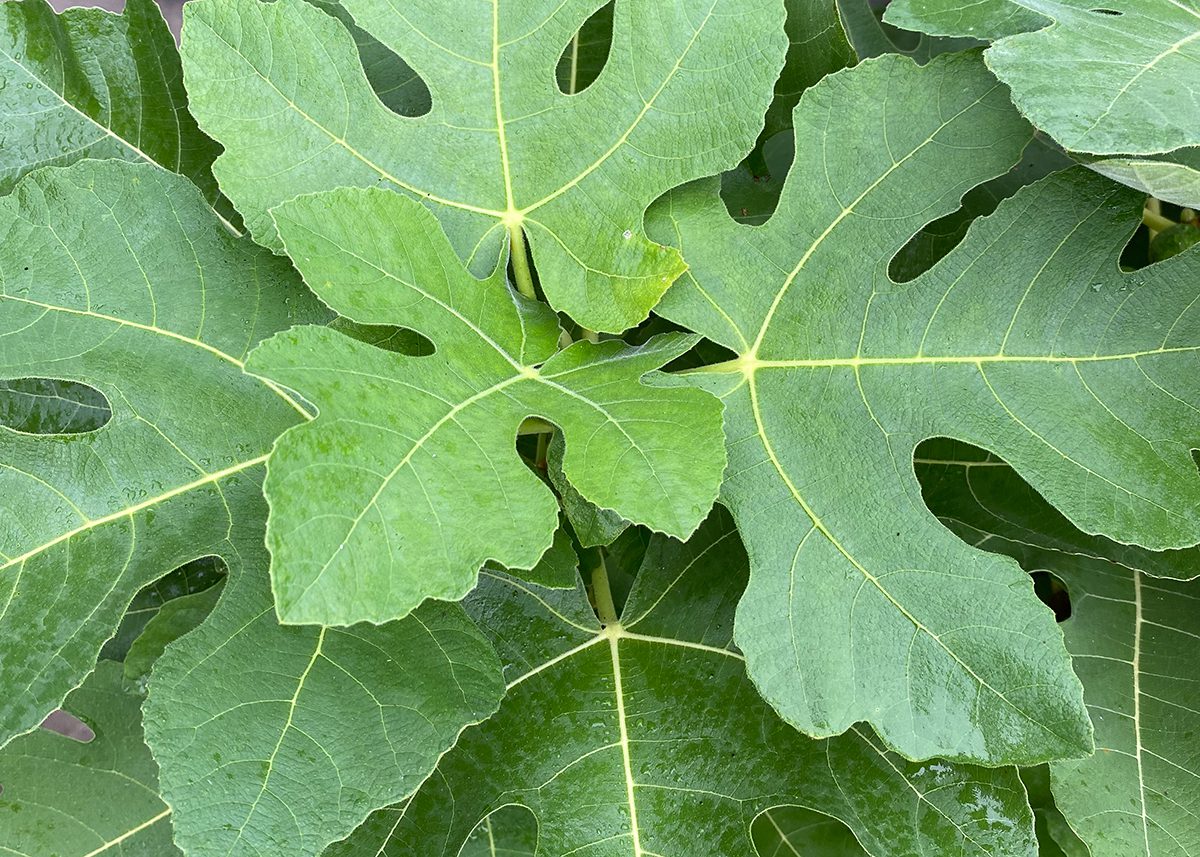
Whether you’re a fig aficionado or the only contact you’ve ever had with figs is spotting a package of Fig Newtons on the cookie aisle, figs are amazing!
Technically not fruit, figs are actually an inverted flower.
Supporter Spotlight
While there are only two figs native to the United States — the strangler fig (Ficus aurea) and shortleaf fig (Ficus citrifolia), both mostly found in Florida — there are literally hundreds of varieties of common figs (Ficus carica). Both plants and figs come in multiple sizes.
Most originally associated with the Mediterranean, as well as western and southern Asia, and having been cultivated since ancient times, figs have since spread throughout the world.
Much easier to grow in our area than say, apples or peaches, figs abound. Because they are uniquely portable and they love our climate, figs do well here.
Brought here across the ocean by the early settlers, uniquely portable in that no live plant is needed, especially on small ships — have you ever seen the replicas of the Nina or the Pinta in Beaufort? They look more like sketchy dinghies you wouldn’t dare go out of Taylors Creek in, much less brave crossing the Atlantic. Especially if, as most passengers were, one was required to remain below decks! Those people were tough and determined to make better lives for themselves in the New World.

Part of that better life included bringing starts from the Old World and hoping they’d take root and thrive here. The only thing needed to get a fig going is a cutting. A stick. One that doesn’t even have to have roots or soil.
Supporter Spotlight
So, on our theoretical journey in the hold of a ship that could qualify for ship-in-a-bottle status, there would be no need to waste precious water on keeping a plant alive. Besides, plants have to have sunlight, also in short supply when you’re stuck in the hold.
Once the travelers reached land, all they had to do was pick a place to stob their stick and keep it watered. Planted in the right spot, figs can grow fast, and they can get big.
There are numerous named varieties of figs, such as brown turkey, Celeste, Chicago, black mission. Partly because figs are so easy to propagate, most of the time we are uncertain just which variety we have access to, especially around here, although brown turkey is widespread, as is Celeste.
Confounding the identification, cuttings tend to be named for who or where they came from. Thus we end up with Grandpa Joe’s fig, or Aunt Thelma’s fig, or Davis Island fig, or any of a million other colloquial names. Not that a name matters too much as long as you’re not set on a particular variety and it’s a tasty fig.

Ocracoke seems to have a good handle on fig varieties, as evidenced by their annual Fig Festival the first weekend of August. Some of those varieties have been on the island for hundreds of years. They sell items made with figs — jams, jellies, preserves, cakes — and rooted cuttings.
Figs like limey soil, full sun, and a lot of water. Not standing water, just a lot of water. They do well on the beach because of the shell content, and you may have seen older folks pile oyster shells around the base of their figs. Not only did the shells provide calcium — lime can be made out of burnt oyster shells — the figs derived nutrients from the bits of oyster and seaweed clinging to the shells. Bonus, it kept the weeds down.
Because they come from cuttings, figs are clones of the mother plant. The fig you get from a cutting will be exactly the type of fig the cutting came from. Since the cuttings don’t know they aren’t still part of the mother plant, they often bear the first year. Maybe not much, but a few. Figs can be started from seed, but that’s a whole process and you might not get a plant with an edible fig, depending on how the seed got pollinated.

Some figs are parthenocarpic, which means they don’t need to be pollinated, and it also means you only need one plant to ensure a good crop. Some figs are pollinated by tiny wasps.
Most of us can readily recognize fig plants when we see them. Did you know figs are in the same family (Moraceae) as mulberries? If you look closer, you’ll notice fig leaves aren’t all the same shape. Just like mulberries, fig leaves can be any of several different shapes.
Figs are pretty much done for this year. The leaves will drop soon and the plants will go dormant, but for now the leaves still smell delicious. Some people swear by them for making tea as a panacea for a whole host of ailments. Fig leaves have been used as such for thousands of years.
Cuttings can technically be taken any time of year, but … not only are the leaves prickly and scratchy like okra, leaves and stems produce a sticky, milky white sap full of furocoumarins that can be a skin irritant, especially when exposed to sunlight. In extremely sensitive people, contact can cause severe burns. On the other hand, the sap can also be used in medicines. Crazy, huh?
Wait until about December, when the leaves have dropped and the sap has retreated. Taking a cutting is as simple as … taking a cutting. The ones that seem to do the best are the straight branches, about the size of your index finger or a little larger diameter. You can do tip-end cuttings only, or you can cut a long branch and section it off in about 4-inch pieces. Stick more than you want because only about 85% of them will root. Any sort of good potting soil can be used, and large pots can hold multiple cuttings. Push them into the dirt enough to make them stand up. Pushing them all the way to the bottom will prohibit roots from forming. Keep them watered. Once they leaf out, usually in a couple months, they’ve generally rooted and can be moved to their own pots.








